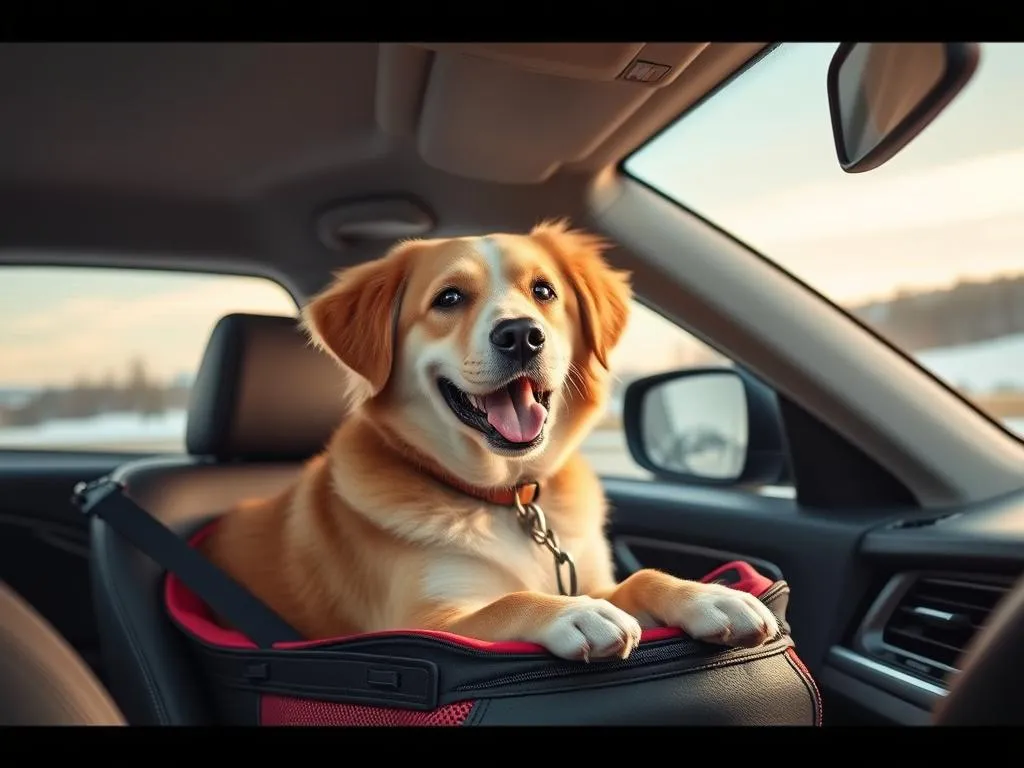
Introduction
The trend of traveling with dogs has seen a significant rise in recent years. As more pet owners recognize their furry companions as integral members of the family, the need for dog car travel tips and guidance has become paramount. Ensuring safety and comfort for both dogs and owners during road trips not only enhances the experience but also strengthens the bond between pet and owner. This article aims to provide comprehensive tips, preparations, and safety measures for enjoyable and safe dog car travel.
Preparing for Dog Car Travel
Choosing the Right Vehicle
When considering dog car travel, the type of vehicle plays a crucial role. SUVs and crossovers generally offer more cargo space, making them suitable for large dogs or multiple pets. Sedans can also be adequate, provided they have enough room for your dog to lie down comfortably. When selecting a vehicle, consider the following:
- Cargo Space: Ensure there’s ample space for your dog and their belongings.
- Safety Features: Look for vehicles equipped with safety features such as airbags and child lock systems that can be useful for pet restraint.
- Accessibility: Choose a vehicle that allows easy entry and exit for your dog, especially if they are older or have mobility issues.
Packing Essentials for the Journey
Preparation is key for a successful trip. Here’s a list of essential items to pack for your dog:
- Dog Food: Bring enough food for the duration of the trip, plus a little extra, just in case.
- Water: Always have fresh water on hand to keep your dog hydrated.
- Leash and Collar: Ensure your dog has a sturdy leash and collar with identification tags.
- Toys: Familiar toys can help comfort your dog during the journey.
- First-Aid Kit: A basic first-aid kit can be invaluable in case of minor injuries.
It’s also wise to have a dedicated travel bag for your dog, containing all necessary items, making it easier to access them when needed.
Health Preparations
Before embarking on your journey, a vet check-up is essential. Ensure your dog is up-to-date on vaccinations, and consider obtaining a health certificate, especially if traveling across state lines. Additionally, flea and tick prevention is crucial, as outdoor environments can expose your dog to these pests. For older or sick dogs, consult your veterinarian for specific travel advice tailored to their health needs.
Safety Measures During Car Travel
Restraining Your Dog
Safety is a top priority during dog car travel. Just like humans, dogs can be injured in sudden stops or accidents. Here are some options for restraining your dog:
- Safety Harnesses: These are designed to attach to a seatbelt, keeping your dog secure while allowing them some movement.
- Crates: A well-ventilated crate can safely contain your dog during the journey. Ensure it’s properly secured in the vehicle.
- Car Barriers: These prevent your dog from moving into the front seat, reducing distractions for the driver.
Each of these options has unique benefits, so choose what works best for your dog’s size, temperament, and your vehicle.
Temperature Control
The dangers of leaving dogs in hot or cold vehicles cannot be overstated. Temperatures can rise or drop quickly, posing serious risks to your pet. Here are some tips for maintaining a comfortable environment:
- Never Leave Your Dog Alone: If you need to make a stop, take your dog with you or ensure they are in a temperature-controlled environment.
- Use Air Conditioning: Keep the car cool and comfortable, especially during hot weather.
- Ventilation: Crack a window for fresh air, but make sure it’s not wide enough for your dog to escape.
Planning Rest Stops
Regular breaks are essential during dog car travel. Plan to stop every two to three hours for bathroom breaks and exercise. Suggested activities during stops include:
- Short Walks: Allow your dog to stretch their legs and relieve themselves.
- Playtime: Bring along a ball or frisbee for a quick game to burn off some energy.
These breaks will help keep your dog happy and comfortable during the journey.
Dog Behavior and Training
Preparing Your Dog for Car Travel
Before hitting the road, it’s important to prepare your dog for the car environment. Gradual acclimatization can help ease their fears and make the trip more enjoyable. Here are some techniques:
- Short Trips: Start with short car rides to help your dog get used to the vehicle.
- Positive Reinforcement: Reward your dog with treats and praise for calm behavior in the car.
Managing Motion Sickness
Just like humans, dogs can experience motion sickness during dog car travel. Signs may include drooling, whining, or vomiting. To prevent and treat motion sickness:
- Feed Wisely: Avoid feeding your dog right before travel; wait a few hours after a meal.
- Medications: Consult your veterinarian about medications that can help relieve motion sickness.
Keeping the Peace in the Car
A peaceful car environment enhances the travel experience. Here are strategies for managing barking or anxiety:
- Familiar Items: Bring along your dog’s favorite blanket or toy to create a comforting environment.
- Calm Music: Play soft music to help soothe your dog during the ride.
- Stay Calm: Your demeanor can influence your dog’s behavior; stay relaxed and positive.
Road Trip Ideas with Dogs
Dog-Friendly Destinations
Planning a trip that includes your furry friend can be rewarding. Here are some popular dog-friendly travel spots:
- Beaches: Many coastal areas have dog-friendly beaches where pets can run and play in the sand.
- National Parks: Research parks that allow dogs on trails or designated areas; just remember to keep them leashed.
- Pet-Friendly Hotels: Many hotels and rentals welcome dogs, so be sure to check their pet policies ahead of time.
Always research and plan your itinerary to ensure that your destination accommodates your dog.
Activities to Enjoy Together
There are plenty of activities you can enjoy with your dog during your travels. Consider the following:
- Hiking: Explore dog-friendly trails, but ensure your dog is fit for the adventure.
- Swimming: Many dogs love water; check for dog-friendly lakes and rivers.
- Dog Parks: Take a break in a local dog park to let your pet socialize and play.
Always keep your dog’s energy levels and fitness in mind when planning activities to ensure they have a great time.
Post-Travel Care for Your Dog
Health Check After Travel
After your trip, pay close attention to your dog’s health. Look for signs of exhaustion, dehydration, or stress. It’s essential to:
- Rehydrate: Provide fresh water and monitor their drinking.
- Rest: Allow your dog to rest and recover after a long journey.
Unpacking and Settling Down
Helping your dog readjust after a trip is just as important as preparation. Here are tips to make the transition smoother:
- Maintain Routine: Stick to your dog’s regular feeding and walking schedule to provide stability.
- Familiar Environment: Allow your dog to explore home after travel, ensuring they feel comfortable and secure in their surroundings.
Common FAQs about Dog Car Travel
Can I leave my dog alone in the car?
Leaving your dog alone in a vehicle can be risky. Temperatures can rise or fall quickly, leading to heatstroke or hypothermia. Additionally, it could lead to potential theft or escape. Always prioritize your dog’s safety and well-being.
What should I do if my dog is afraid of car rides?
If your dog is anxious about car rides, consider:
- Desensitization: Gradually acclimate your dog to the car environment with positive experiences.
- Calming Aids: Use anxiety wraps or calming sprays to help soothe your dog during travel.
How do I find dog-friendly accommodations?
Finding dog-friendly places to stay can be easier with the right resources. Use websites and apps dedicated to pet-friendly lodgings or call ahead to confirm policies. Always check for additional fees or restrictions.
Conclusion
Traveling with your dog can be a fulfilling experience filled with adventure and bonding. By prioritizing safety, preparation, and comfort, you can ensure that both you and your dog enjoy the journey. Remember to take the time to plan, pack wisely, and create a positive environment during your dog car travel. Happy travels!









